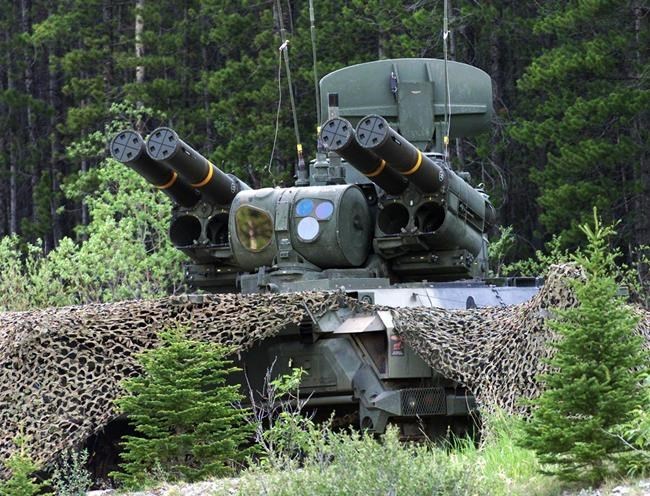OTTAWA — The federal Liberal government's plan to buy anti-aircraft missiles for Ukraine is prompting questions about why such equipment isn't being bought for the Canadian Army.
The Army has been without weapons to defend Canadian troops from enemy aircraft, rockets and drones since the last of its anti-air weapons were retired in 2012, and efforts to acquire new ones have remained stuck in neutral for years.
Multiple Army commanders have described the lack of such weapons as a key deficiency for the Canadian military, including defence chief Gen. Wayne Eyre, when he was the head of the Army in 2019.
That December, Eyre said restoring anti-aircraft defence was one of his top priorities.
A spokesman for Defence Minister Anita Anand said on Tuesday that the provision of an American-made surface-to-air missile system to Ukraine, at a cost of $406 million, would help protect against air attacks on Ukrainian cities, infrastructure and military sites.
"Russia's illegal and unjustifiable invasion of Ukraine is also an attack on the international rules that keep us all safe," Daniel Minden said in an email. "In other words, Ukraine's security is Europe's security and the world's security — including Canada's."
The decision to purchase surface-to-air missiles for Ukraine was applauded by retired military officers who spoke to The Canadian Press, but they also questioned why Ottawa wasn't doing the same thing for the Canadian military.
Former Liberal MP and retired Army commander Andrew Leslie said his first reaction to news about the systems for Ukraine was: "Excellent."
"And in about three seconds, it went from, 'Excellent, we're buying this for Ukraine' to 'Now, why the hell aren't you buying it for Canada?'" he said.
The need for anti-air defence is particularly relevant now as the Canadian military prepares to deploy more soldiers and equipment to Latvia, where Canada is leading a NATO battle group charged with defending eastern Europe from Russia.
Minden did not say why Canada was buying what's known as the National Advanced Surface-to-Air Missile System for the Ukrainian military but not its own. He instead pointed to a procurement project launched by the Liberal government in 2018 to obtain a variety of anti-air defensive systems.
That $1-billion "ground-based air defence" project is expected to deliver a variety of capabilities to defend against different threats. Yet it isn’t scheduled to deliver anything to the Army until at least 2027.
In the meantime, Minden said, "Canada continues to operate alongside allied nations who have this capability."
Retired lieutenant-general Marquis Hainse says the need for what is known as ground-based air defence system was identified back in 2013, when he took over as commander of the Army.
"We certainly pushed it up as a priority for the Army in my time and somehow we never got there," he said in an email.
Analysts have previously noted that when the Canadian military put away the last of its anti-air weapons in 2012, it was on the assumption that Canada and its allies would have air superiority in any battle and not have to worry about airborne attacks.
But Hainse noted that the war in Ukraine has highlighted a number of different gaps in the Canadian military’s capabilities, including the need for air defences.
He and Leslie said the surface-to-air missile system, which is designed to intercept short- to medium-range threats, may not be perfect, but it's a start.
"Is it a pretty good system? Yes," Leslie said. "Is it bleeding edge technology? No. But we have nothing right now."
Retired lieutenant-general Guy Thibault, who previously served as vice-chief of the defence staff, said there were arguably legitimate reasons for why the government took its time on buying a ground-based air defence system for the military in previous years.
Those include the lack of a clear threat, other priorities and Ottawa's emphasis on made-in-Canada content and economic benefits, which has been a hallmark of the Canadian military procurement system over the past decade.
"But I would think that things have changed in people's minds when they're watching what's going on in Europe, and thinking about our forces that are on the frontlines there," he said.
"And as a significant partner in NATO, I think it's rather shameful that we couldn't provide these kinds of capabilities, or that we're not in a position to provide more capacity to contribute to the alliance's defence and deterrence mission in Europe."
This report by The Canadian Press was first published Jan. 11, 2023.
Lee Berthiaume, The Canadian Press




